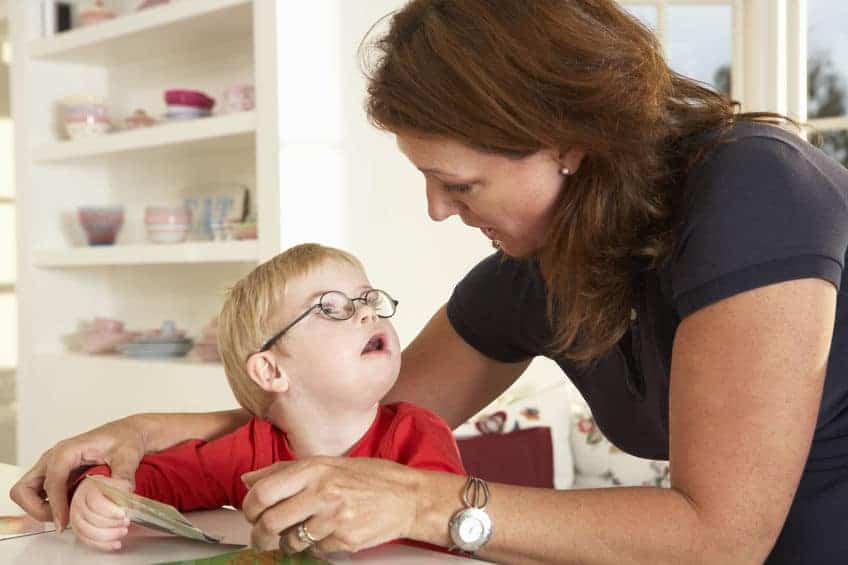Down’s Syndrome and Sound Therapy
 Down’s syndrome and hearing
Down’s syndrome and hearing
Seventy five percent of children with Down’s syndrome have a hearing impairment. This is often due to recurrent middle ear infections and wax impaction. Repeated chronic middle ear infections result in fibrous adhesions which limit the movement of the ossicles (the middle ear bones) resulting in progressive hearing loss. Children with Down’s Syndrome are significantly affected by sensory deprivation and need preventative measures if they are to reach their full cognitive potential. A delay in the comprehension of language results in a delay in speaking. The impairment of language abilities delays learning in all areas and makes the task of education and socialisation more difficult. This results in behaviour problems which could be avoided if the language abilities were improved.
Why Sound Therapy may help
It is very important for children with Down’s Syndrome to have their hearing treated in the early years to assist with language development. These children respond well to education in the area of social and emotional adjustment, motor skills and visual comprehension. The greatest area of difficulty in learning is in auditory vocal processing. They often have difficulty learning to manipulate the speech system, coordinating the tongue, lips, jaw and palate. Because they face much greater obstacles in producing speech sounds they need assistance with their hearing more than ever.
Dr Tomatis discovered that the voice can only produce what the ear hears. Sound Therapy stimulates the hearing capacity and exercises the ear, training it in particular to receive high frequency sounds that are lost when hearing is damaged. The sounds of consonants, such as b, d, p, g and t are high frequency sounds and are of course essential for clear comprehension of speech. Before they can begin learning to produce these sounds, children must first be able to hear them. As Sound Therapy stimulates hearing in the higher frequencies, a greater range of tonality is available to the voice and this is very important for producing intelligible speech.
How to use it
Parents should ensure that their children’s ears are checked regularly and that they receive treatment for ear infections or wax impaction. Recurrence of these problems may decrease with the use of Sound Therapy. The movement and exercise produced in the ear by Sound Therapy often results in a spontaneous expulsion of fluid from the ear and blockages may be less likely to recur.
Children with Down’s syndrome need to listen regularly to Sound Therapy on a long term basis to help keep the ears open and stimulate the full range of hearing.
For the first few months of listening, children should listen to Sound Therapy every day for a period of 30 to 60 minutes or longer if desired. If the child wishes to listen for several hours at a time it will do no harm. The auditory stimulation provided by Sound Therapy has a re-charging effect on the brain and children with Down’s Syndrome generally respond with enthusiasm. It is important to continue language education through the life of a person with Down’s syndrome. This ongoing learning process may be greatly enhanced for people of any age by listening to Sound Therapy.
The Benefits
The protection and enhancement of hearing achieved through Sound Therapy could have significant results for all areas of development of children with Down’s syndrome. Improved hearing leads to a greater interest in the environment and what is happening, more liveliness and more willingness to learn. Language comprehension and speech improve significantly, helping to enhance the child’s education and performance in all areas.
For more information, please refer to the book book Why Aren’t I Learning? by Rafaele Joudry.

